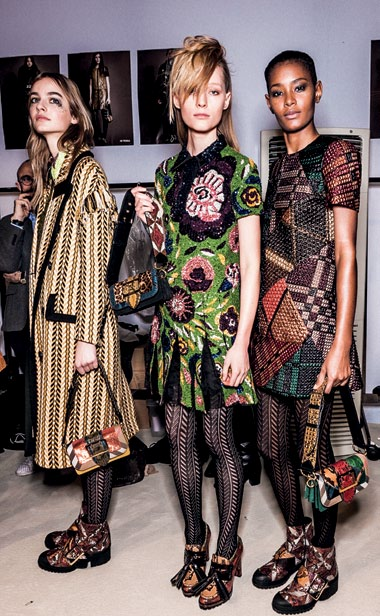History and heritage meet innovation and know-how at the house of Burberry.


History and heritage meet innovation and know-how at the house of Burberry.
You can feel the winds of change blowing at Burberry. For starters, the decision to consolidate the label—now simply called Burberry as opposed to the previous split of Burberry London, Burberry Brit and Burberry Prorsum—has strengthened the voice coming out of its Horseferry House headquarters. The move also serves to clarify Christopher Bailey’s vision. Bailey, Burberry’s long-serving Chief Creative Officer as well as the company’s Chief Operating Officer, is on a mission to not only uphold the brand’s legacy but also make his own mark in the history of fashion.
Celebrating 160 years of heritage in 2016, central to the storied British house’s legacy is the notion that it’s a brand ahead of its time—its founder, Thomas Burberry, invented gabardine, a durable fabric notably outfitting the first man ever to reach the South Pole. And, of course, there’s the matter of that little thing called the trench coat, which has been synonymous with the brand since World War I. Borne out of necessity, the trench coat has evolved into a stylish need, a timeless symbol of class and style.
The story of that evolution perfectly illustrates how the brand celebrates the old by looking through the lens of the new. Take its highly successful “Art of the Trench” digital initiative, a crowdsourced project that highlights everyday folk interpreting the trench coat with their own flair. First launched in 2009, kicking off with a series of images shot by Scott Schuman, the social media campaign that has been endlessly analysed in digital marketing case studies is still going strong seven years later. With uploads of snapshots from Los Angeles to Shanghai to Tbilisi, the outerwear is now seen as a modern must-have for the global citizen.
“Art of the Trench” was a blueprint of what was to come for Burberry, proof that its showrunners recognised the power of digital media and technology. It was one of the first global luxury brands to welcome bloggers, vloggers and social media influencers to its fashion shows and into its global conversations. And in its continued efforts to be a part of the digital generation, Burberry has learnt to speak the language of youth through Twitter, Instagram and Snapchat. The brand made waves earlier this year when it enlisted 16-year-old Brooklyn Beckham, who has over seven million followers on Instagram, to shoot the Burberry Brit fragrance campaign and live-showcased what was taking place behind the scenes through Snapchat with the #thisisbrit hashtag. And, in a move that millennials would no doubt approve of, Burberry’s fall/winter 2016 collection was debuted through Snapchat even before the actual show day.
Since 2009, Bailey has opened the House’s door to the masses, byte by byte—from live streaming the seasonal fashion shows on the company’s website, to its series of digital collaborations with Apple, including having a dedicated channel on Apple Music. At the brand’s massive flagship store on Regent Street in London, a customer can try on a Burberry jacket in the fitting room and, right on cue, the mirror will give a 360-degree view of the item, complete with extra information on the manufacturing and fabrication details and, perhaps, a short video on the making of the garment. By using barcode technology, anyone can scan a Burberry product and receive tips on how to wear it or what to pair it with—just one of the innovative experiences that allows its customers to get up close and personal with the brand.
But nothing has grabbed headlines more than a move that combines digital media, technology and business acumen—a potential game-changer spearheaded by Bailey. If successful, it will ensure he leaves his mark in the annals of fashion. Come September, customers can place their orders for what they just saw come down the runway, immediately in stores and online—the “see now, buy now” phenomenon that has since been embraced by other similarly forward-thinking labels.
For now, Bailey looked to the past, channelling his younger days onto this season’s collection. He paid homage to the late David Bowie, with the glitter on the models’ eyes complementing the shimmer on their outfits. Glamour reigned supreme with the abundance of lamé, exotic skin, patent leather and brushed wool-mohair. Never forgetting that touch of modernity, Bailey mixed nonchalance and unexpected elements of luxury into the collection by sending out sequinned tracksuits and embellished boots on the runway. In contrast to the brand’s military-inspired outerwear staples were the women’s dresses: They came in ’60s A-line silhouettes or ended far below the knee, in eclectic jacquard or sequins. As for the undisputed star accessory of the season, the Patchwork bag came in a veritable rainbow of colourways. Patchwork—now isn’t that just the perfect representation of the heady mix that sums up Burberry’s modus operandi? It takes skill, and power, to make heritage and tradition fresh again—and Bailey has them all in spades.

































